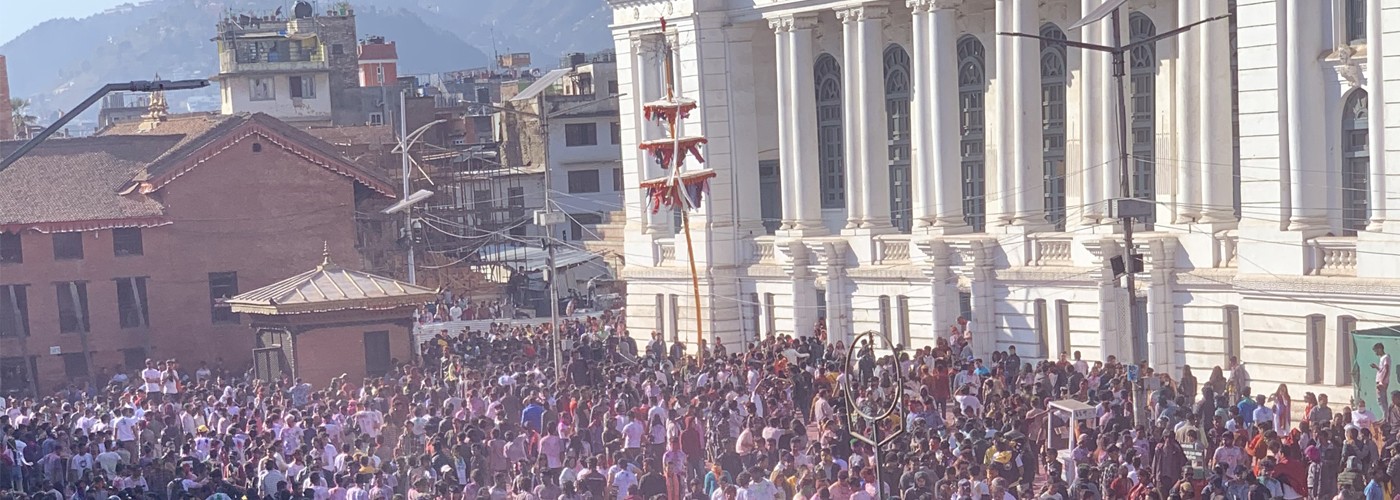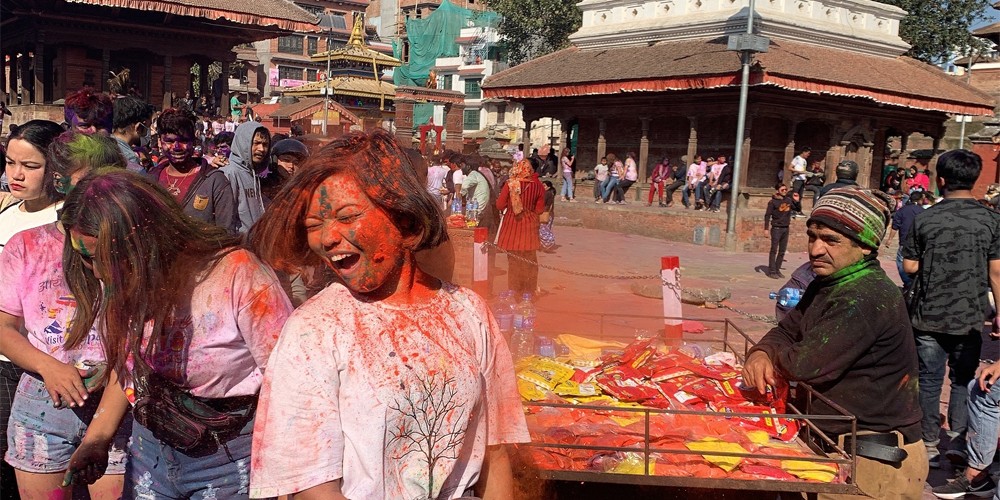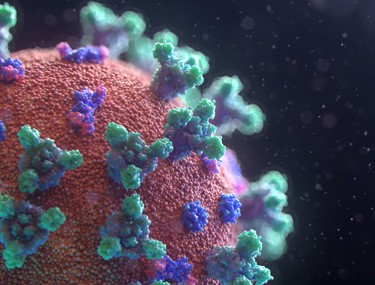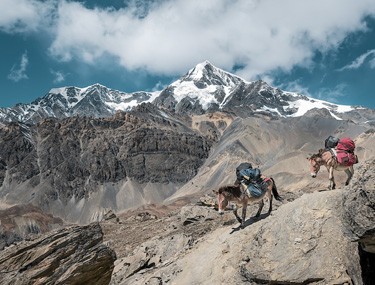Holi is considered as one of the most admired and celebrated festivals of Nepal. It is celebrated in almost every part of Nepal with joy and enthusiasm. It is also known as Fagu Purnima, celebrated on a full moon day at the end of the month of Falgun, which falls between mid-February and mid-May. This festival signifies the arrival of spring and the end of cold winter. This festival is also known as a festival of love as on this day people get to unite together forgetting all resentment and all types of bad feeling towards each other. During this festival, people meet each other and play with colours and colourful water.
Holi: Festival of colour in Nepal
Table of Content

Holi is celebrated all over Nepal. In Kathmandu, Holi festival begins with the raising of the ceremonial pole around noon in front of Kumari House at Basantapur Durbar square. It’s topped with colourful cloth strips and stands there until the end of the festival. On the day of Holi, people walk through their neighbourhoods to celebrate Holi by exchanging colours and spraying coloured water on one another. At pass throwing of water or colour water balloons also called Lola at one another was popular but at present people use a small plastic bag instead and thrown at each other. Throwing Lola at distance is popular among Holi celebrator. On the final day, the pole known as Chir is brought down, dragged to Tudikhel and burnt to cinders. Some devotees carry these ashes home in the believed that it will provide protection against evil. The important fact of Holi celebration in Nepal is: In Hilly region, Holi is celebrated in the full moon day of Falgun month and in the Terai region, Holi is celebrated on the next day. Almost all market, shops, schools and offices are closed on Holi festival. You can find a group of people with their face covered with colours walking in the street and smearing colours to loved ones, friends and relatives.
During Holi, traditional concerts are held in most cities in Nepal, including Kathmandu, Narayangarh, Pokhara, Itahari, Hetauda and Dharan. Holi is an ancient Hindu religious festival which has become popular with non-Hindus. Although the festivities predominantly occur in India and Nepal, this festival is being celebrated by India subcontinent. Spread in countries such as Jamaica, Suriname, Guyana, Trinidad, Malaysia, the United Kingdom, the United States, and Canada. In recent years, the festival has spread to some parts of Europe and North America as a spring celebration of love, frolic and colours.

The origin of the Holi festival can be found in various legends in Hindu Mythologies. Some are given below:
- The Vishnu Legend,
- The Krishna Legend and
- Kama and Rati legend
According to Vishnu Legend, the roots of the Holi festival lies in the Hindu legend of Holika, the sister of the demon, King Hiranyakashayap. Hiranyakashayap believed he was the ruler of the universe and superior to all the gods. But his son, Prahlad followed the god Vishnu. Prahlad’s decision to turn him down left Hiranyakashayap with no choice. He hatched a plot with Holika to kill his own son. As part of their plans, Holika lured Prahlad onto a pyre in an attempt to burn him to death. While sitting on the pyre with Prahlada. Holika put on a magical shawl on herself that protected her from the fire. However, as the pyre burned, the shawl flew from Holika’s shoulders onto Prahlad’s resulting in the demon perishing in the flames. Later, Lord Vishnu took the form of a half-man and half-lion and killed the treacherous king. The moral of the story is that good always conquests over evil. Thus, in modern-day, the Holi festival begins with Holika Dahan. It is Holika’s cremations often reenacted by lighting bonfires on the night before Holi.
According to Radha and Krishna Legend, the tradition of throwing coloured powder and water is believed to originate from the mythological love story of Radha and Krishna. Krishna, the Hindu god depicted with dark skin, is believed to have complained to his mother about Radha’s fair complexion. To ease her son’s sadness, his mother suggests that he can smear colour on Radha’s face and change her complexion to any colour he wanted. Fascinated by the idea, Krishna proceeded to smear Radha with colours and thus, introduced the festival of colours where one smear loved ones with colours during Holi.
Another Holi legend dedicated to Kama and Rati legend. Once Lord Shiva was in deep meditation and goddess Parvati wanting to bring back Shiva into the world, seeks help from the God of love Kama deva. The Kamadeva shoots arrows at Lord Shiva. Shiva opens his third eye and cursed the Kama and turned him into ashes by the force of an angry Shiva’s third eye. On the tearful request of Kama’s wife Rati, the Lord restored him representing true love. Thus, Holi is the celebration of love and in some places Kamadeva, the Love God is worship.
Whatever are the reasons behind the beginning of Holi festival! The oldest account of Holi being commemorated dated as far back as the 4th century. It’s celebrated around the world, will great fun. If you have not seen or taken part in this festival then you should definitely be in Nepal to observe the Holi: festival of colours and be the part of the celebration.


